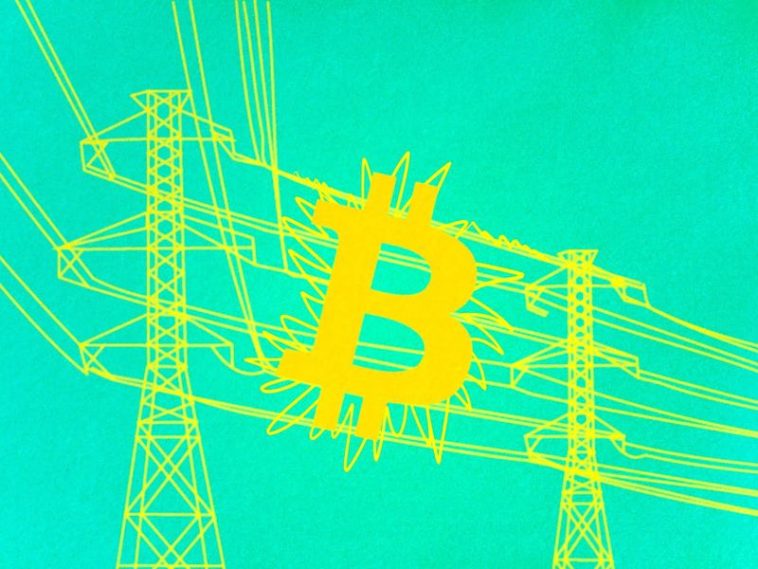Join the most important conversation in crypto and Web3 taking place in Austin, Texas, April 26-28.
The environmental impact of bitcoin mining was trending again in the last few weeks due to a Texas bill looking to limit its grid participation and a New York Times article that condemned the industry.
Bitcoin mining consumes about 145 terawatt hours (TWh) of electricity per year, says data from Cambridge University’s Centre for Alternative Finance, which is about the power consumed by Sweden, according to the International Energy Agency.
To critics, bitcoin’s proof-of-work algorithm is wasteful by design as its electricity demand continuously grows. To industry advocates – it’s a feature, not a bug – as it secures the network while ensuring decentralization.
There is a third camp that sees bitcoin’s energy consumption as an opportunity. A slew of new products and companies are trying to mitigate the environmental impact with several innovative solutions that build on top of what is already in place to help miners become more sustainable.
Some of these projects are creating or taking advantage of market instruments that incentivize making bitcoin more “green,” while others are technical, centered around improving efficiencies and synergies around reusing the heat generated by the data centers.
Renewable energy credits
One such product, offered by crypto lender BlockFills and fund Isla Verde Capital, aims to help not only miners but also investors to find a “green” solution for their energy usage.
The offering essentially is tradable environmental assets in the forms of carbon emissions offsets and Renewable Energy Credits (RECs). Carbon credits, assets that represent sequestered greenhouse gasses through projects such as reforestation, are as well known as they are criticized.
Renewable energy credits (RECs) represent ownership of the sustainability of electricity produced. These certificates represent 1 megawatt hour (MWh) of power produced from renewable sources such as wind, hydro and solar. They are usually separate to any power purchase agreements and are usually traded over the counter (OTC).
BlockFills and Isla Verde Capital tailor the purchase of RECs and carbon credits to miners’ needs, and later retire them, such that they can make claims about renewable energy sources.
The RECs are also geared towards bitcoin investors. “Massive asset managers” are now “looking at bitcoin, but they have these sustainability mandates that they must follow,” said BlockFills John Divine. The RECs can help them invest comfortably.
This might actually raise the price of RECs, “which directly incentivizes investment in renewable energy technology,” Divine said.
Incentivizing sustainability
Switzerland-based Block Green is another project that is trying to incentivize sustainable mining through a decentralized lending protocol. On their platform, liquidity providers looking for bitcoin-native investments can buy future hashrate over a specified period of time, or computing power.
The platform includes “know-your-miner” information about a company’s financials, operational data, their energy sourcing and strategy. Block Green believes that market mechanisms on the platform will incentivize sustainable mining as liquidity providers will pick miners with sustainable operations, lowering their cost of capital.
“We are currently working with some of the largest miners in the U.S. and Canada and we have begun integrations with institutions such as custodians, exchanges and asset managers looking to give users access to transparent and scalable” returns on their bitcoin, said a spokesperson for the firm.
Tokenizing clean bitcoin
Another solution that is using financial incentives is offered by Clean Incentive and Sustainable Bitcoin Protocol (SBP). These companies are trying to promote investments in “clean” bitcoin by creating new, blockchain-based assets that miners can trade to capitalize on their use of renewables. Investors looking to verifiably own environmentally-conscious bitcoin are the right fit for these assets.
With SBP, miners can verify their use of clean energy with third-party auditors and be added to a registry. After that, for every block reward they get, they receive a Sustainable Bitcoin Mining Certificate, a blockchain-based asset which they can sell to institutional investors. SBP completed its first transaction of a sustainable bitcoin certificate in February.
Similarly, Clean Incentive looks to “collect, validate and tokenize ESG [environmental, social, and governance] attributes” from a network of miners, said its founder and CEO Casey Martinez, a data scientist with experience in renewable energy.
The startup is still in stealth mode, but has already onboarded several miners, Martinez said Clean Incentive partnered with a small-scale miner from Canada, Ocean Falls Blockchain, in November.
Efficient cooling
Some of the more technical solutions that firms are providing include both hardware and software-related products.
Immersion cooling firm, LiquidStack, offers a hardware-based cooling solution that can cut the energy used by the computers in bitcoin mines by 40% and reduce their land use by one third, the company said in March.
For every megawatt (MW) of energy used for the actual computing in a data center, LiquidStack’s solution uses 0.02 MW for cooling, whereas other options use 0.1 MW to 0.7 MW, LiquidStack said.
The firm, one of the earliest in the space, received funding from Trane Technologies (TT) in March, a 150-year old firm in the heating and cooling space which brought in $16 billion in revenues in 2022.
“What made LiquidStack attractive was its potential to improve sustainability for data centers, including bitcoin mining, and its innovation,” said Amber Mulligan, VP of Strategic Sales and Marketing, Commercial HVAC Americas at Trane.
LiquidStack’s technology also makes heat reuse easier and more efficient, opening the door to a host of synergies for miners, said Mulligan, noting that because the heat is actually managed with liquids instead of traditional air cooling, capturing it and directing it to other uses is easier.
On the software-side, Vancouver-based mining services firm, Lincoin, has created a program that miners can use to more efficiently and profitably manage their operations, including their participation in demand response programs and heat reuse activities.
Demand response is when a miner, or other energy consumer, shuts down their operations at times of peak demand, such that the grid can meet the consumption needs. Often miners get paid for this. Heat reuse refers to the practice of using excess heat from a mining operation for another activity, such as greenhouse farming.
The software, called Rails, integrates real-time data from over 20,000 grid nodes in 9 deregulated electricity markets in the U.S. and Canada, said a press release.
“Large scale miners use Lincoin to monitor real-time profitability, manage and optimize their operations, streamline tasks and participate in grid ancillary services while smaller miners use Lincoin to innovate by managing heat in greenhouses, monetize their surplus solar energy generation, or simply mine intelligently,” said CEO Medi Naseri in an email interview with CoinDesk.
Edited by Aoyon Ashraf.
DISCLOSURE
Please note that our
and
do not sell my personal information
has been updated
.
The leader in news and information on cryptocurrency, digital assets and the future of money, CoinDesk is a media outlet that strives for the highest journalistic standards and abides by a
strict set of editorial policies.
CoinDesk is an independent operating subsidiary of
which invests in
and blockchain
As part of their compensation, certain CoinDesk employees, including editorial employees, may receive exposure to DCG equity in the form of
which vest over a multi-year period. CoinDesk journalists are not allowed to purchase stock outright in DCG
.
Learn more about Consensus 2023, CoinDesk’s longest-running and most influential event that brings together all sides of crypto, blockchain and Web3. Head to consensus.coindesk.com to register and buy your pass now.
https://www.coindesk.com/business/2023/04/22/here-are-six-new-projects-looking-to-mitigate-bitcoin-minings-energy-footprint/?utm_medium=referral&utm_source=rss&utm_campaign=headlines



:format(jpg)/www.coindesk.com/resizer/r4hCNh4zR8o4AxiOYIgV0l2Wigc=/arc-photo-coindesk/arc2-prod/public/QPY362MKDVA77CB4EHZRXW2KZM.jpeg)


